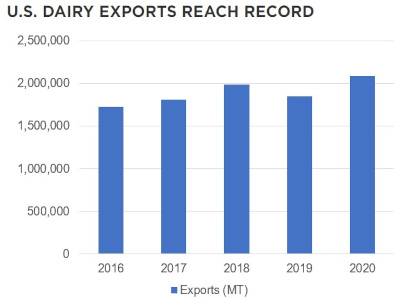The false-but-pernicious idea that dairy is dying has already been laid to rest multiple times. Per-capita consumption of all dairy is its highest since the 1950s. Even fluid-milk purchases (the dairy opponents’ cherry-picked data of choice) rose at grocery stores last year, as consumers sought out what they needed most during a time of higher stress.
But even all that analysis fails to point out another, increasingly important fact crucial to understanding U.S. dairy’s true importance: More than ever, it’s not just Americans seeking out these high-quality, high-nutrition products. U.S. dairy increasingly nourishes the world, with 2020 the most emphatic illustration of that point.

Last year, total milk solids exports (the measurement accommodates for the different types of products milk’s made into) topped 2 million metric tons for the first time, reaching 2.086 million, based on government data crunched by the U.S. Dairy Export Council. Revenues were the highest since 2014. And the percentage of U.S. milk production that’s shipped to other countries increased to 16 percent, showing just how important exports are becoming for U.S. dairy producers – and the consumers around the world who rely on them.
Click here to see more...